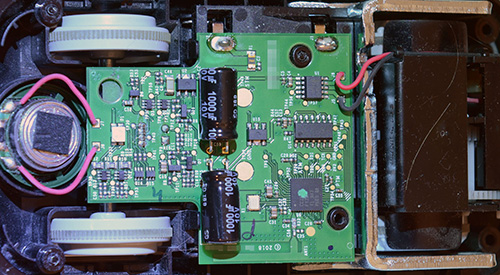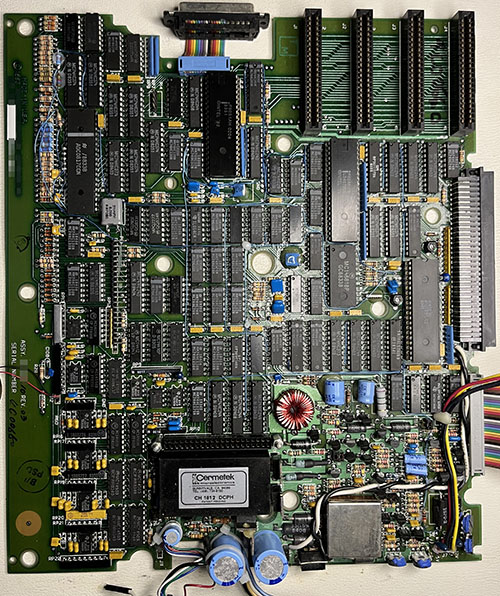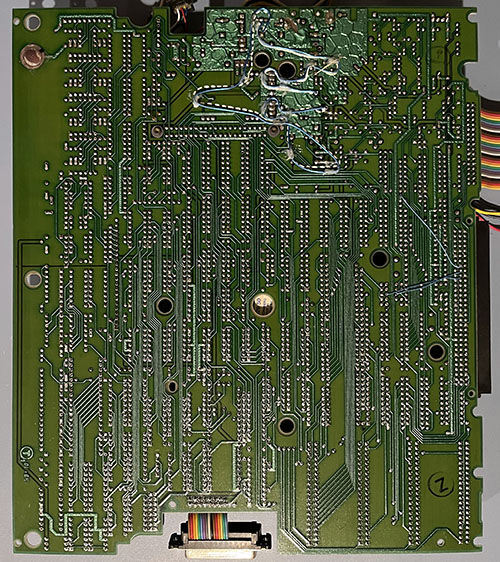The Ware for March 2025 is shown below.
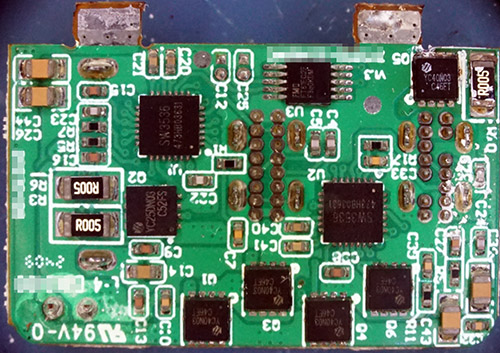
I was just taking this thing apart to see what went wrong, and thought it had some merit as a name that ware. But perhaps more interestingly, I was also experimenting with my cross-polarized imaging setup.
This is a technique a friend of mine told me about where you put a polarizer on the light source, and then put another polarizer 90 degrees from the light source in front of your imaging lens. As you can see from the comparison above, the contrast on the part numbers is greatly enhanced — at the expense of losing most of your light. What isn’t obvious from the two images is the one on the left required a much longer exposure because 90+% of the light is not reaching the camera due to the cross-polarization.
My understanding of the theory is that with this technique, light that hits textured surfaces is more scattered (and likewise the polarization is more randomized) by the rougher, laser-marked regions of a chip label, while light bouncing off of smoother surfaces is attenuated because the polarization is more preserved (and thus blocked by the cross-polarized filter on the lens). So it’s less of an enhancement of the laser marked regions and more of an attenuation of everything that’s not.
The solution to the attenuation problem in our modern era is to just throw more light at it and mount your camera on a stand so you can afford a longer exposure time. Fortunately white LEDs are really cheap and ridiculously powerful, and I have some extra COB-based ring light emitters laying around the lab. The technique doesn’t scale to large boards as easily, but it just so happens this particular ware fits nicely in the field of view of the illuminator + camera.
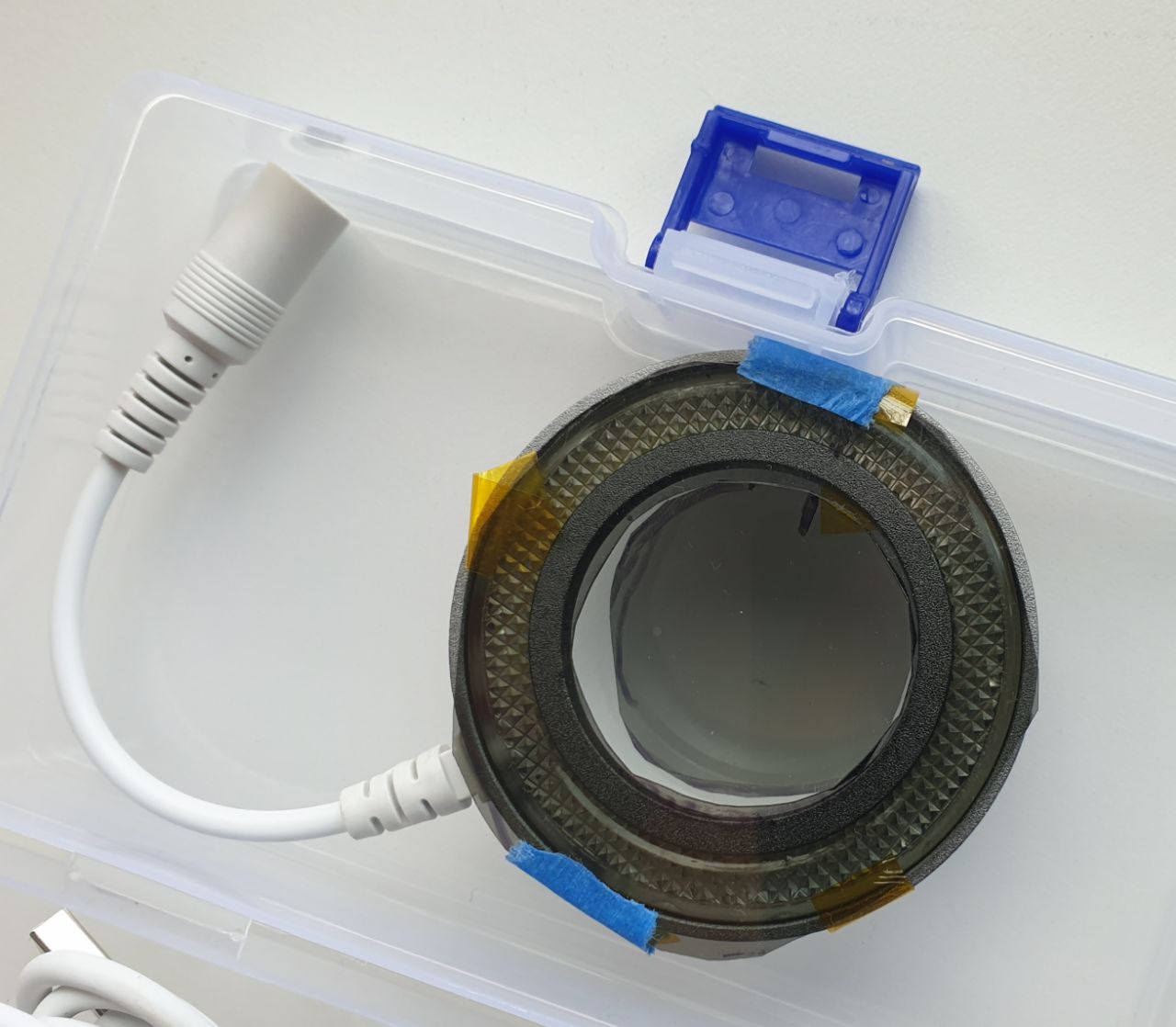
The whole setup is pretty crude…just a cheap polarizer film that was rough-cut with scissors, and taped onto a $10 COB ring light I picked up some time ago in the Shenzhen markets that screws directly into the accessory threads of the objective on my benchtop microscope. Works OK, tho!
